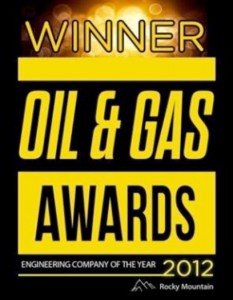Article by: Bob van der Valk
There is no such thing in the petroleum business as perfect timing but in this case the Keystone XL pipeline project may just be the ticket to put North America over the threshold of becoming energy secure from Middle East countries from which we have been importing crude oils for over 40 years. The Organization of the Petroleum Exporting Countries (OPEC) is a cartel given a free hand to rule over the oil dependent economies of Western Countries like the US by dictating our fuel prices for over 40 years.
With excuses to “The Association” for using a parody of their song to make my point:
And then along comes Keystone
And does she want to give me kicks , and be my steady stream
And give me pick of memories
Or maybe rather gather tales of all the fails and tribulations
No one ever sees
Tanker rail cars filled with crude oils are already heading south from Saskatchewan, Canada and Trenton, North Dakota. The bitumen oil sands and Bakken crude oils could be more easily transported and economically by the use of a pipeline. It’s been a long four years with many fails and tribulations along the way to obtain the necessary permit to construct and operate just the animal known as the Keystone XL pipeline.
After completion it will be able to carry 830,000 barrels of crude oil to Cushing, Oklahoma on its way by use of the southern leg already under construction going to the Gulf Coast refineries. An on-ramp called The Bakken MarketLink will intersect with the Keystone XL pipeline in Baker, Montana, providing much needed relief for export of oil being produced from the Bakken formation. Much of this oil is currently exported with a discount to producers due to the lack of infrastructure necessary to move their product. Additionally, the pipeline will provide the safest method of transport, where currently much of the oil is being transported by tanker or railcar.
Much of the workforce necessary to build the new pipeline will be housed in a proposed workforce camp adjacent to the City of Baker. The camp will be built when the Presidential Permit (necessary to cross the Canadian border) has been approved. In preparation for the camp, the City of Baker has been working with Keystone to assure the necessary water and wastewater infrastructure is in place. Current electrical work being performed in Baker, Montana is for a wastewater lift station. Any improvements that are needed for the camp once it is constructed will be ultimately reimbursed by Keystone to the City.
Ongoing electrical infrastructure work at the proposed Baker, Montana workforce camp site.
Senator Alan Simpson gave the keynote address on February 20, 2013 at the Western Petroleum Marketers Association Convention and Trade show in Las Vegas. The former Senator from Wyoming recently became better known for the Bowles – Simpson Plan to reduce to national debt.
In response to my question about the future of the Keystone XL pipeline, he revealed Richard Trumka, the current President of the AFL-CIO, would come out in favor of President Obama granting the permit for construction and operation of the Keystone XL pipeline about a month from then.
Senator Alan Simpson took time to pose with me before giving the keynote address
Right on schedule on March 21, 2013 Joe Canason, a reporter for Real Clear Politics web site, interviewed Trumka. He told him that he doesn’t oppose the Keystone XL crude oil pipeline, current bête noire of the environmental movement. Although the AFL-CIO hasn’t directly backed Keystone, it has endorsed “pipelines in general,” said Trumka, who argues that the pipeline will have “a smaller carbon footprint” than other methods of transporting those petroleum products.
The nation would be better served, he says, by reducing “seeps and leaks” from existing oil facilities, “which represent a bigger hazard to the environment.” Would that create jobs? Trumka responded: “Far more than the pipeline itself — about 125,000 jobs a year. But it would also be a win-win. The environmentalists agree with us on that, we should clean up the leaks and the seeps.”
Read more at: http://www.realclearpolitics.com/articles/2013/03/21/the_newsmaker_memo_an_interview_with_afl-cio_president_richard_trumka_117562.html#ixzz2SL7CzAjJ
From 2005 to 2012, East Coast refinery runs of imported crude decreased 735,000 barrels per day (bbl/d) or 46 percent. (Editor’s note: There are 42 gallons in one barrel of crude oil.) That decrease was almost matched by a 685,000 bbl/d decrease in overall East Coast crude runs. Recently, the large price differentials between land-locked crude oils with growing production, such as the Bakken, and global sea-borne crude oils linked to the price of the Intercontinental Exchange of London Brent crude oil benchmark price, have encouraged refiners to bring more domestically produced crude into the region via rail. In 2012, 92 percent of crude oil run in East Coast refineries was imported, down from 99 percent in 2005.
 Opposite this trend, the Midwest has been importing significantly more crude oil from Canada since 2005. In 2012, runs of imported crude oil reached 1.7 million bbl/d, an increase of 205,000 bbl/d (14 percent). In 2005, almost 34 percent of imported crude oil run in the Midwest was shipped to the Midwest via another region, most commonly by pipeline from the Gulf Coast; however, by 2012, nearly all imported crude processed in the Midwest was imported directly from Canada. While total U.S. crude imports have been decreasing, imports from Canada have gone up 775,000 bbl/d since 2005. The United States imported 2.4 million bbl/d of Canadian crude oil in 2012, or about 28 percent of the total U.S. crude imports.
Opposite this trend, the Midwest has been importing significantly more crude oil from Canada since 2005. In 2012, runs of imported crude oil reached 1.7 million bbl/d, an increase of 205,000 bbl/d (14 percent). In 2005, almost 34 percent of imported crude oil run in the Midwest was shipped to the Midwest via another region, most commonly by pipeline from the Gulf Coast; however, by 2012, nearly all imported crude processed in the Midwest was imported directly from Canada. While total U.S. crude imports have been decreasing, imports from Canada have gone up 775,000 bbl/d since 2005. The United States imported 2.4 million bbl/d of Canadian crude oil in 2012, or about 28 percent of the total U.S. crude imports.
The AFL-CIO endorsement, for the Keystone XL pipeline permit to be recommended by the US State Department for final approval by President Obama, is a step in the right direction. Another little push and North America will be energy secure and stick our thumbs on our noses to those pesky OPEC members.
ABOUT THE AUTHOR – Bob van der Valk, petroleum industry analyst, is the managing editor and regular contributor of the Bakken Oil Business Journal. He works and lives in Terry, MT. He can be contacted at (406) 853-4251 or by email.













